The desire for selfies, the rush of adrenaline, the proximity to death and blood and guts, all make the annual Running of the Bulls an irresistible drawcard for thousands of thrillseekers and voyeurs around the world.
For nine days each European summer, the San Fermin festival takes over the northern Spanish city of Pamplona, which is packed to the rafters with blow-ins who come to drink, dance, and - yes - run for their lives as dozens of bovine battering rams charge through the narrow streets.
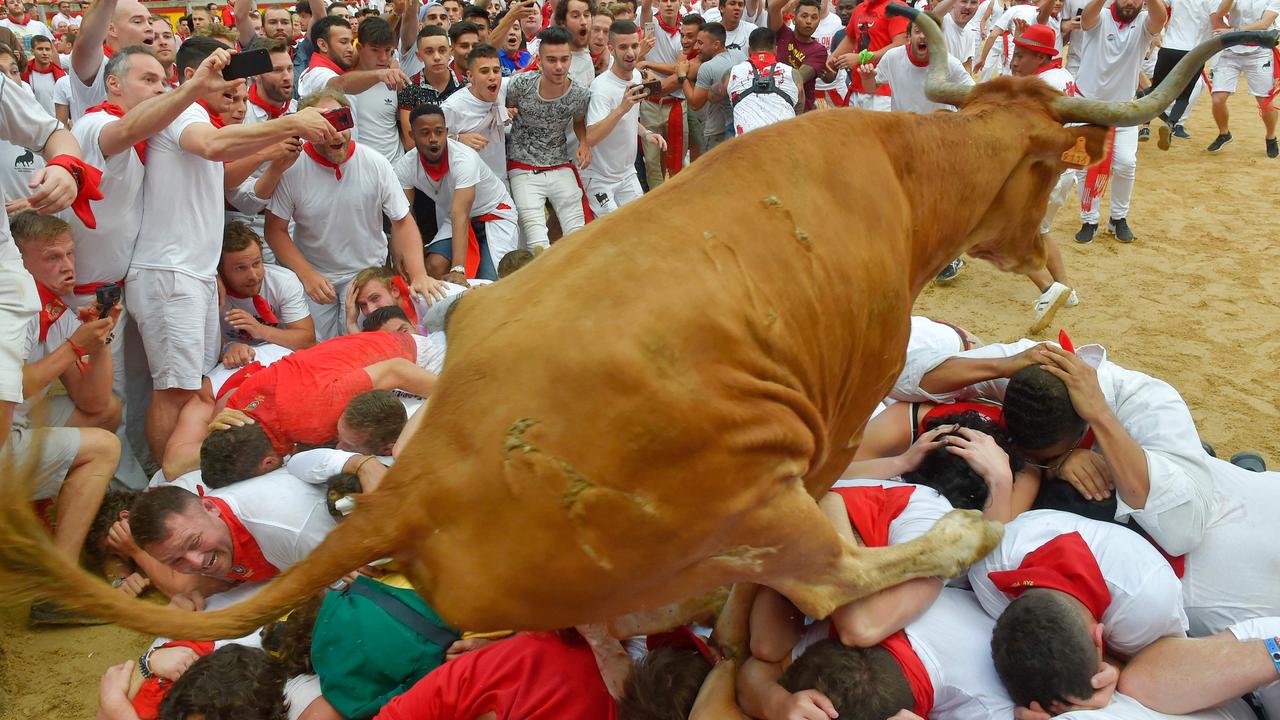
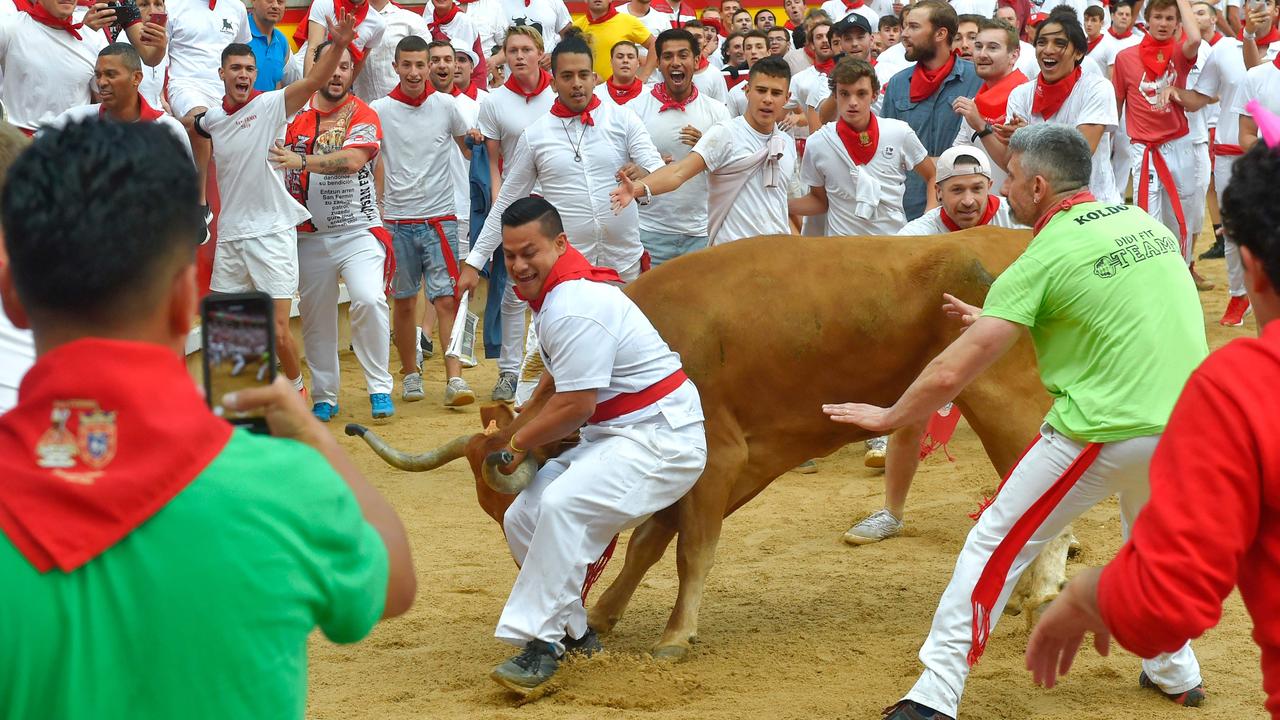
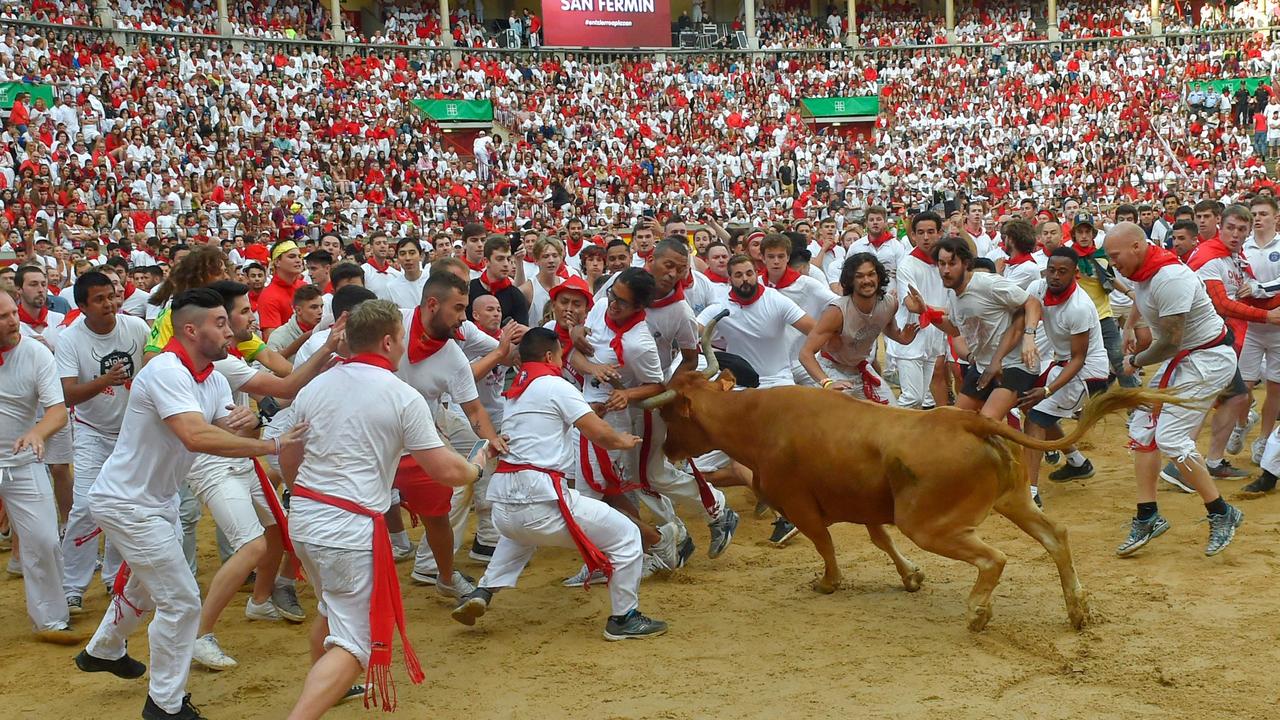
Most walk away from the carnage unscathed, an unlucky few end up with nasty injuries, from bull horns, other runners, or tumbles on to the cobblestone pavement. Deaths are not unknown.
A charging bull ran over and gored San Francisco resident Jaime Alvarez in the neck during the first run of this year’s festival.
“The joy and the excitement of being in the bullring quickly turned into a scare, into real fear for my life,” Alvarez, 46, said on Monday at a regional hospital where he was recovering from surgery.
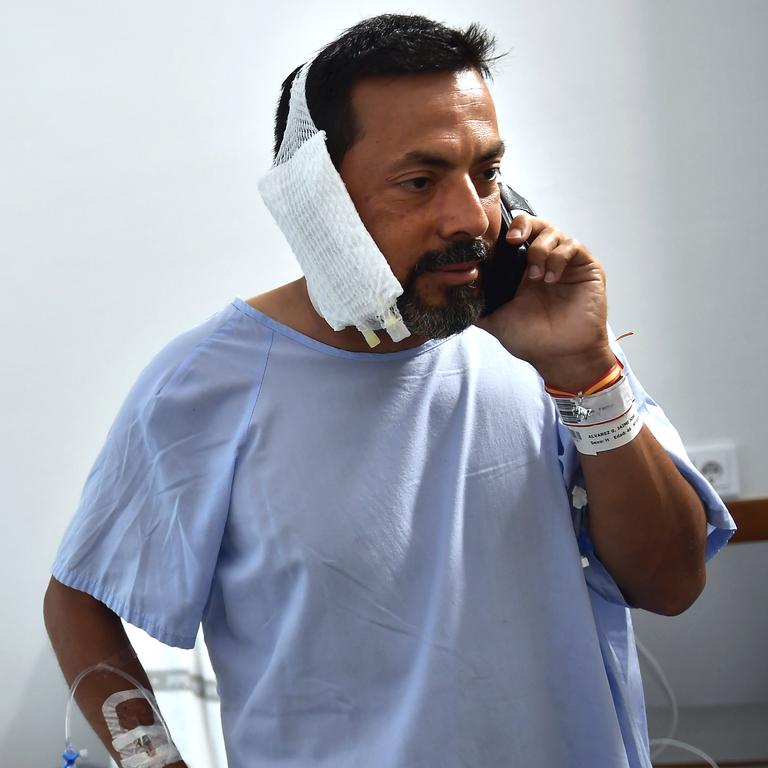
Doctors told Alvarez the bull’s horn went deep into his neck and fractured part of a cheekbone. That it didn’t hit the jugular vein or major arteries was described to the injured patient as “beyond miraculous.”
Alvarez said he realised how severely he’d been hurt during his encounter with the bull Sunday morning when he touched his neck and his hand came away covered with blood.
“In the course of a few seconds, a million thoughts came to my mind, and that of dying was definitely one of them,” he said.
Alvarez said he ran most of the 850-metre course ahead of the bulls. But by the time they entered the bullfighting plaza at the end, the herd of animals had caught up with him.
He said he climbed onto a fence for safety and only returned to the arena to shoot a short video when he thought that the danger had passed. He wanted “a 5-second video scene to say ‘Here I am, I did it.”’

That’s when the stray bull came at him running fast. The bulls chosen to race in Pamplona often weigh in the range of 500-600 kilos. “The impact was unlike anything I’ve ever felt. It was like being hit by a car or a truck,” Alvarez said. “It was scary.
“I was really out of it, really stunned, I didn’t know what direction to go.”
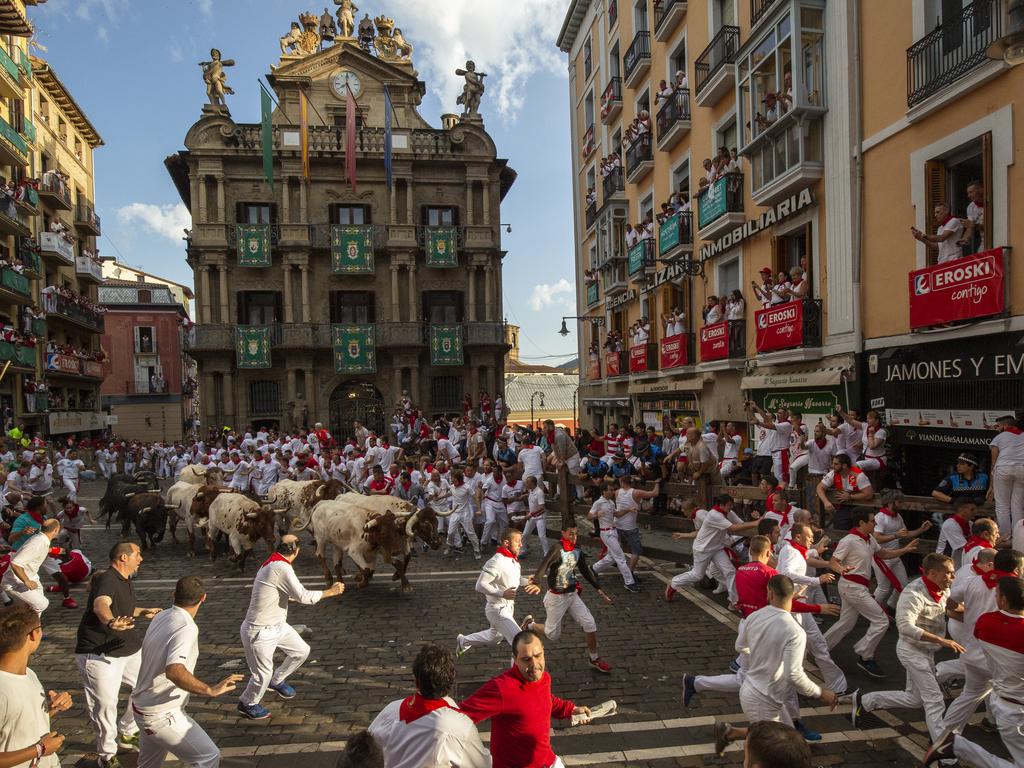
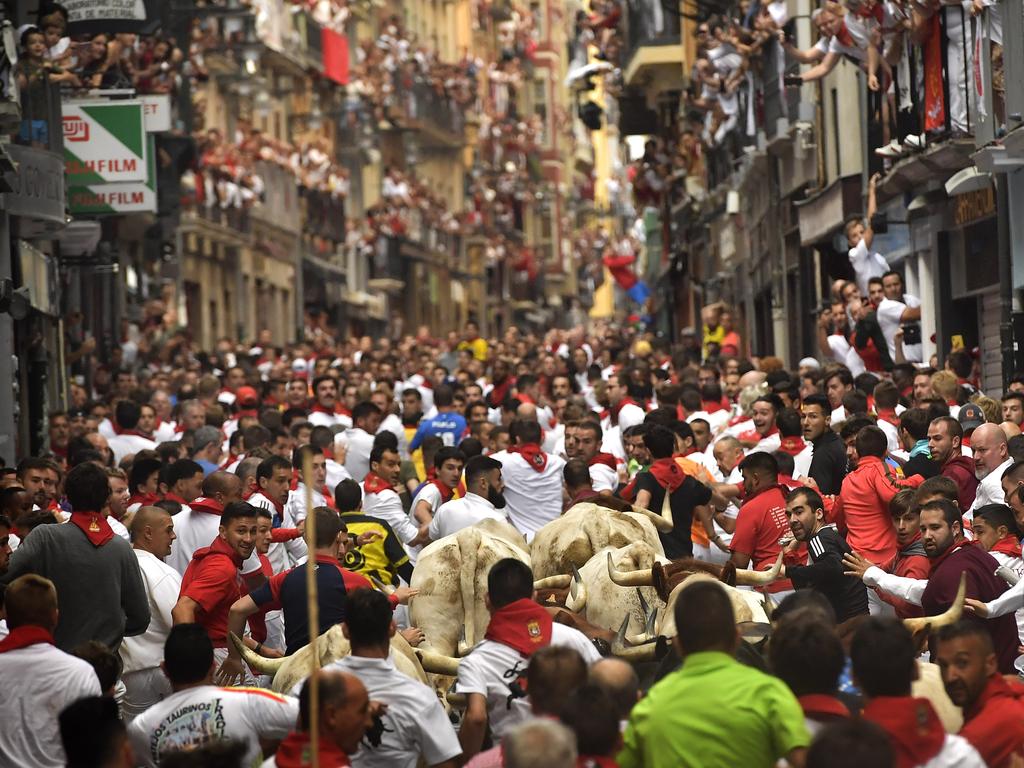
Doctors told Alvarez the bull’s horn went deep into his neck and fractured part of a cheekbone. That it didn’t hit the jugular vein or major arteries was described to the injured patient as “beyond miraculous.”
“In the course of a few seconds, a million thoughts came to my mind, and that of dying was definitely one of them,” he said.
The running of the bulls - and the nine days of seamless partying that accompanies the festival - draws about 1 million spectators to the city of 200,000 every year.
Many foreigners imagine following the footsteps of Hemingway, who channelled his experience in the 1926 novel “The Sun Also Rises.” Hundreds of runners with varying degrees of fitness and hours of sleep race ahead of or next to the bulls charging through a cobblestone and barricaded street course to Pamplona’s bullring. Records dating back to 1910 list 16 deaths from the event.
.
Once it appeared certain he would live, the run-in brought rebukes from Alvarez’s wife and daughter. The three stopped in Pamplona to check out the San Fermin festival while en route to another city where the couple’s son was playing in a soccer tournament.
While his daughter and wife cautioned him against joining the crowd that would race the bulls, Alvarez said the energy in the streets of Pamplona on the festival’s opening day was too strong to resist.
He wasn’t the only casualty. Three Spanish runners, including a 19-year-old woman, and a 48-year-old American citizen, were bruised and treated at hospitals.
Another man was stabbed in the back with a bull’s horn and treated on the spot, a Red Cross spokesman said.
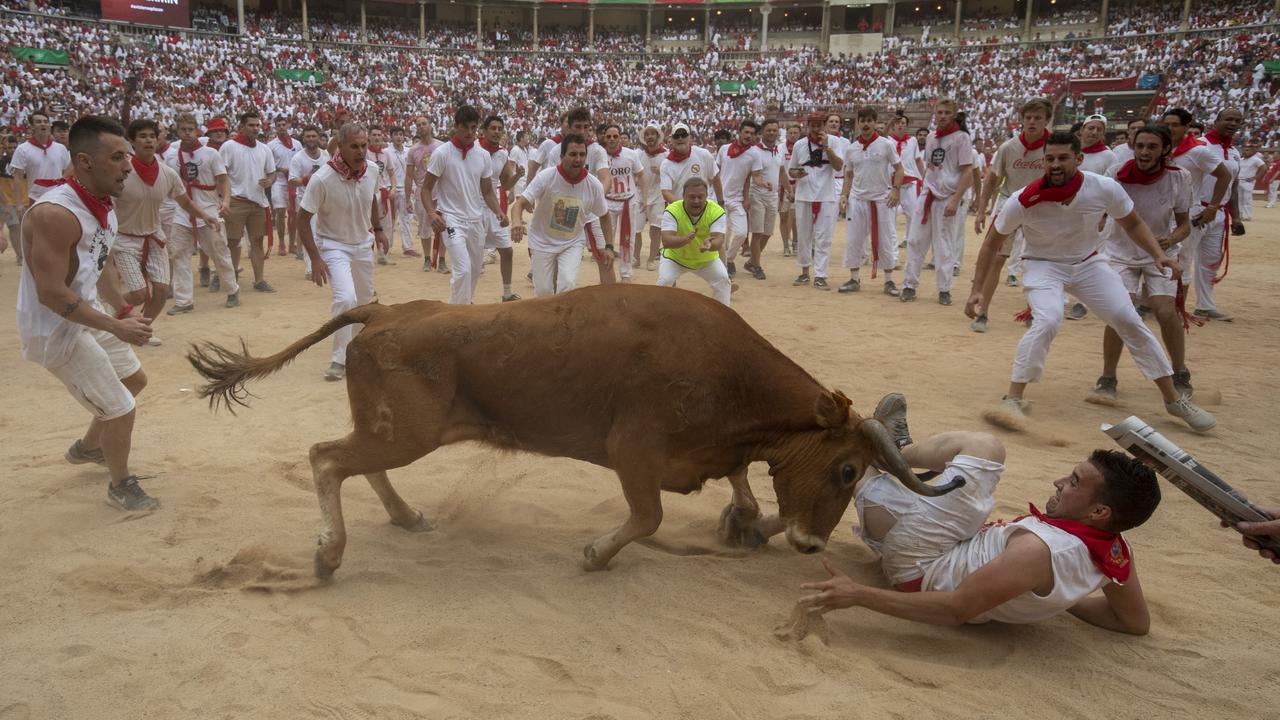
The festival, while massively popular with tourists, does have its detractors and the protests against animal cruelty grow louder each year.
Dozens of half-naked protesters lay down on the street with fake spears jutting from their backs on the eve of the festival, in a recreation of the technique used to weaken bulls in a bullfight.
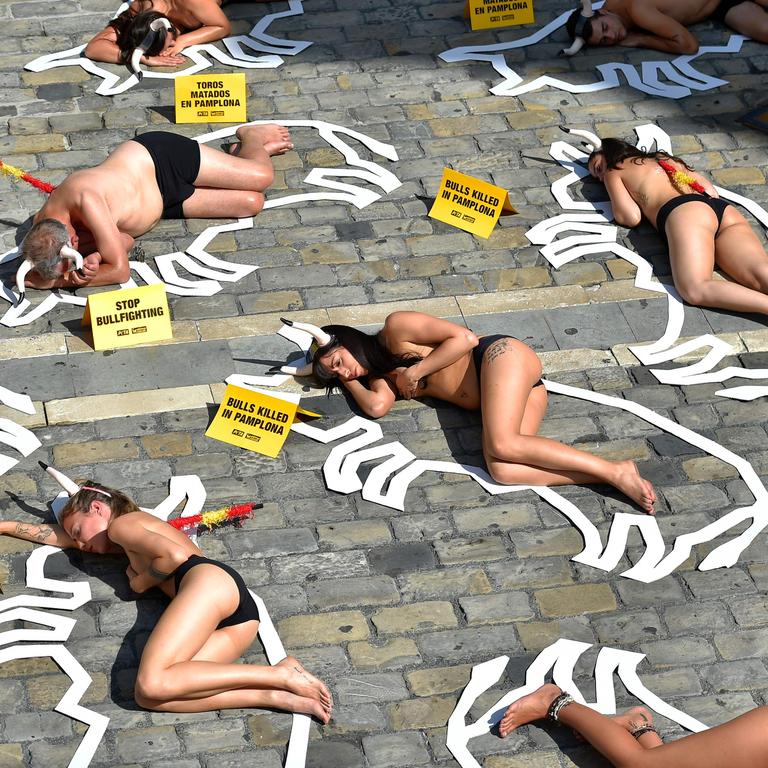
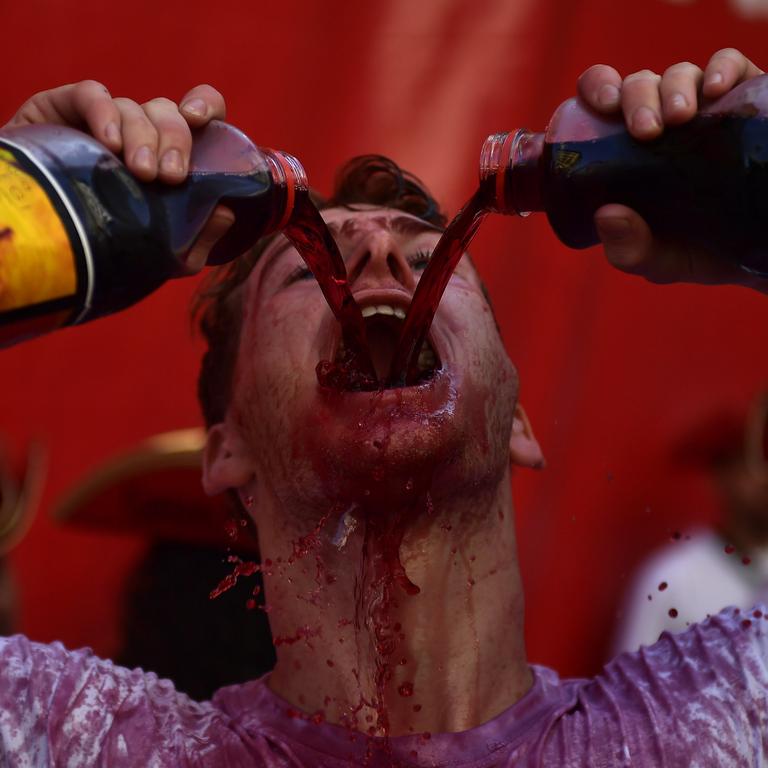
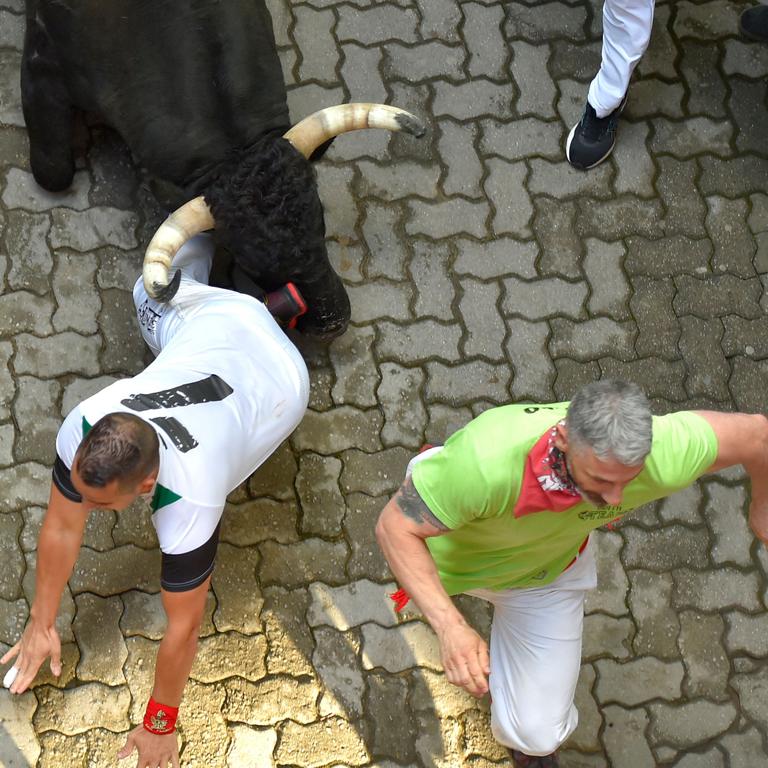
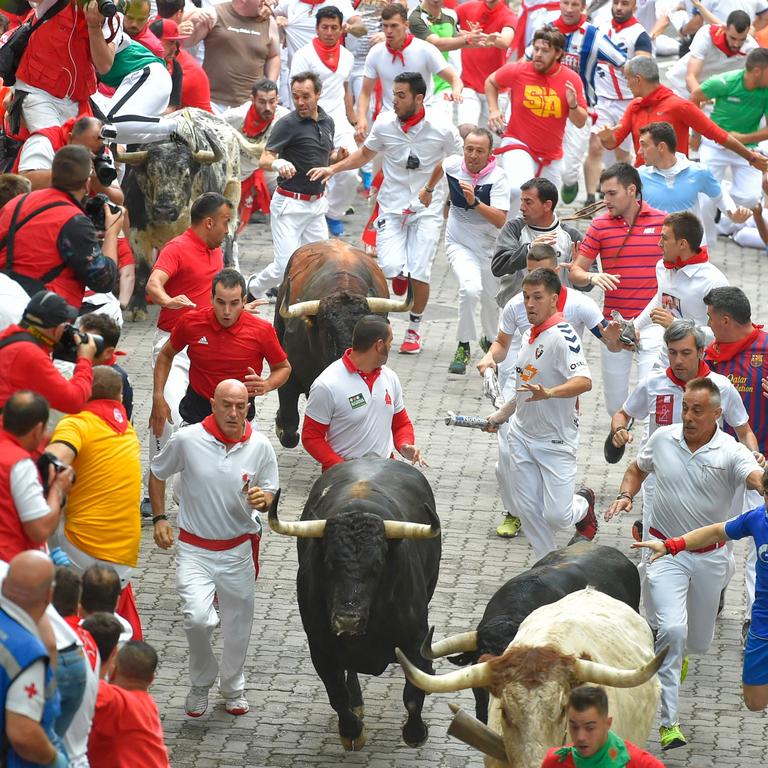
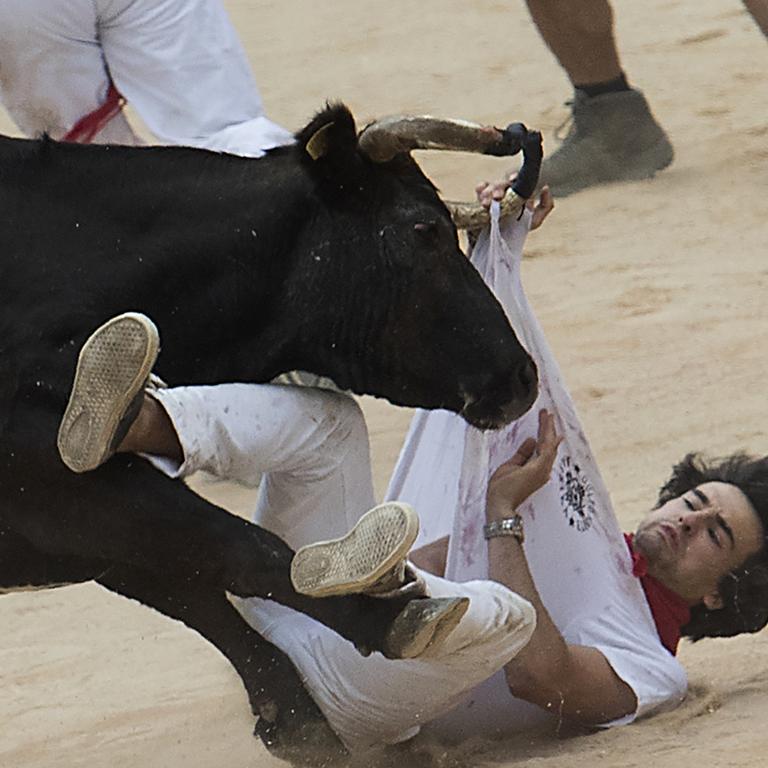
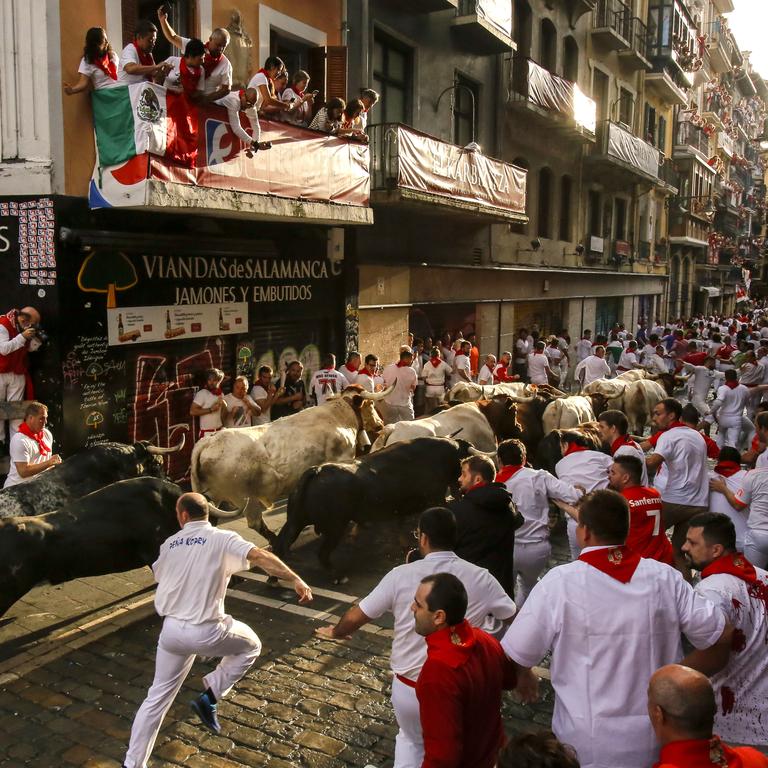
The activists from Animal Naturalis, which organised the demonstration with another animal rights group PETA, taped the outlines of bulls on the floor as police would in a crime scene.
“Supporting the bull runs is the same as supporting bullfighting, as the same bulls that run in the mornings will later be tortured and killed in the bullring,” said Aida Gascon, spokesperson for AnimalNaturalis. Gascon said many people believe the bulls are put out to pasture after the run whereas in fact they are included in bull fights and killed in the ring later the same day as part of the festivities.
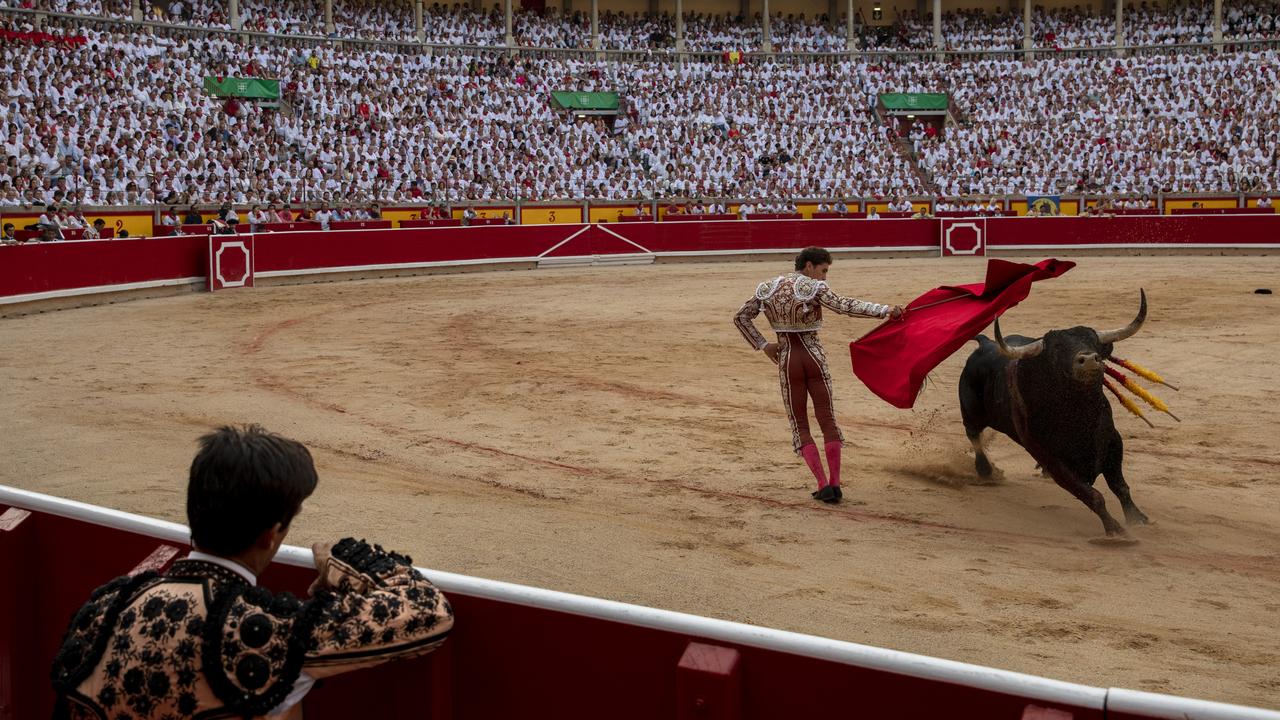
One of several bull running fiestas held around Spain every year, San Fermin was made famous when it featured in US author Ernest Hemingway’s novel “The Sun Also Rises”.
The week-long San Fermin festival hosts over a million people each year and involves traditional shows and events, though it is mostly known for the daily bull run which ends at the Pamplona bull ring.
Proponents of bullfights say the fights and runs are a central part of the festivities, putting Pamplona on the global stage and bringing millions of euros into the city every year.
“They don’t stop to think ... about the economic aspect. Pamplona lives off San Fermin. A lot of locals count on that week to sustain themselves for the rest of the year,” said 44-year-old bullfighter Angel Gomez Escorial.
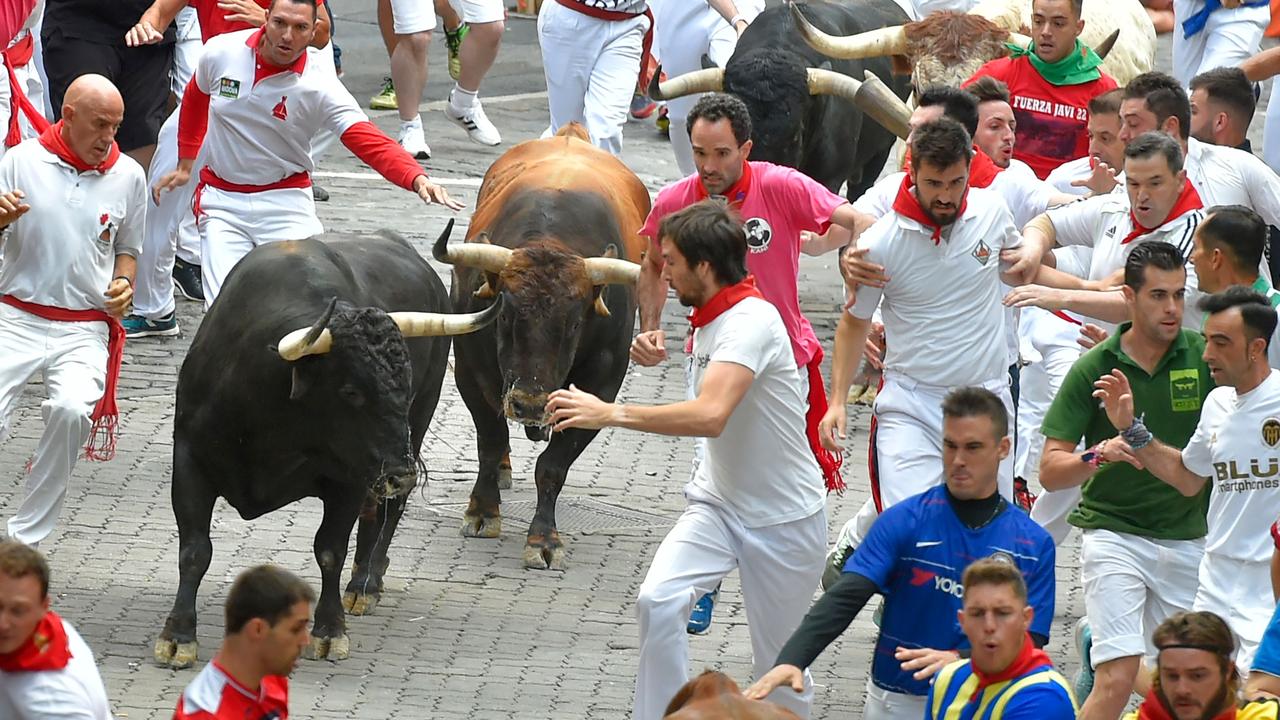

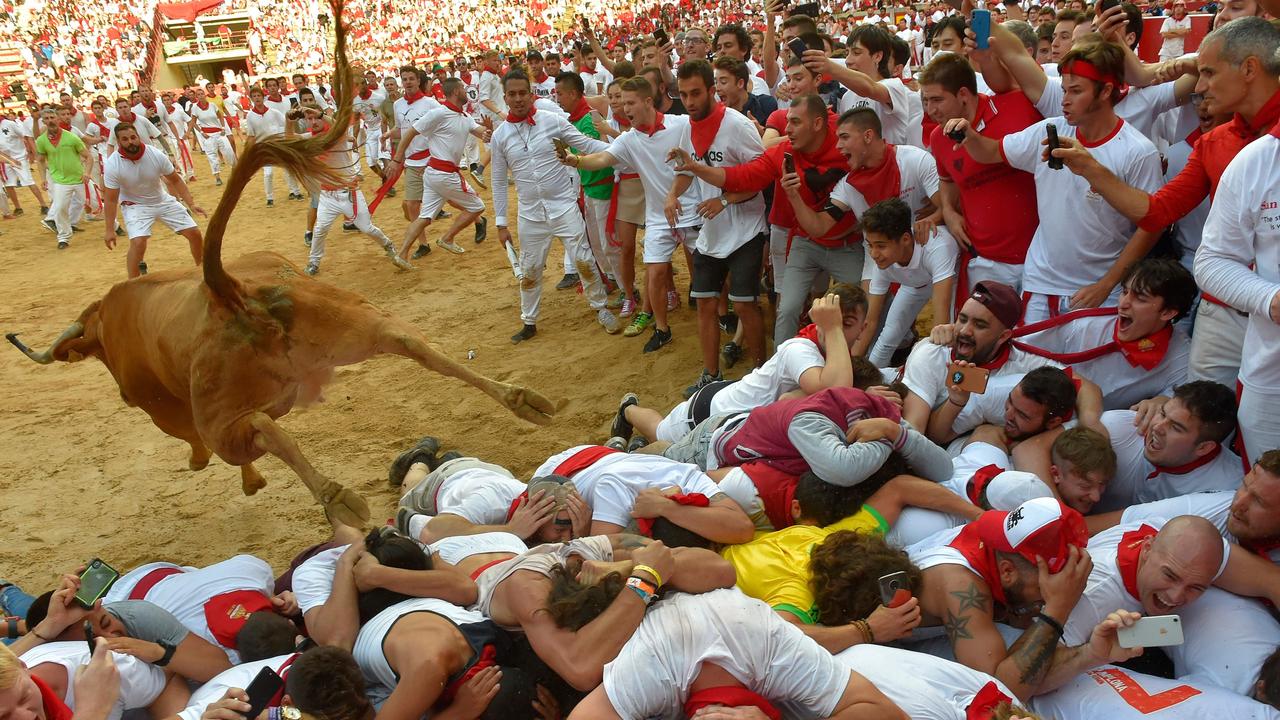
Margot Robbie tipped for ‘wild and orgasmic’ reboot
Margot Robbie is being tipped to star in the ‘anti-woke’ reboot of a 1990s movie smash hit but she might not have things all her own way.
Trump’s huge move on Epstein files
After another week of drama surrounding convicted pedophile Jeffrey Epstein, Donald Trump has finally bowed to pressure and has made a huge demand.